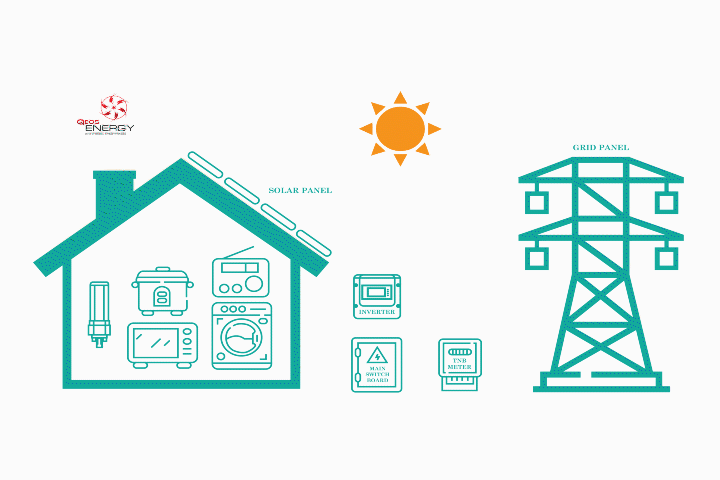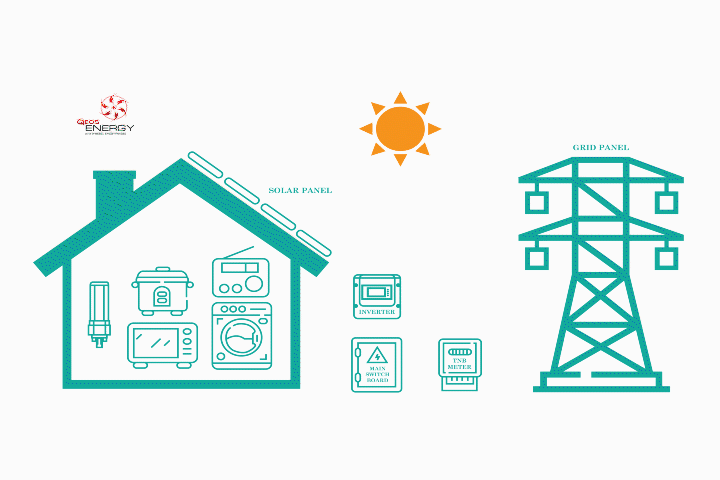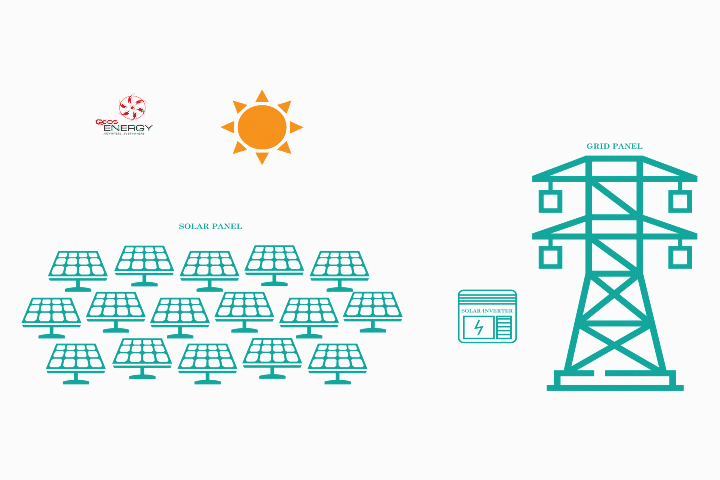
When you install a solar PV system onto your own rooftop and fully utilize all the solar energy generated from it, it will be considered as SELCO in which any excess will not be exported to the grid, according to the guidelines of the Electricity Supply Act 1990. For more information: Visit This Site
MESTECC encourages consumers in the residential, commercial and industrial sector to install solar PV for their self-consumption in order to reduce the overall energy consumption.
Under the Electricity Supply Act 1990, you can refer to the application guidelines for self-consumption:
• Any person who uses, works or operates any solar PV generating facility for self-consumption and indirect connection to the licensee distribution network in Peninsular Malaysia and Sabah
• The relevant Distribution Licensee (DL) whose network is to relate to the self-consumption solar PV generating facility.
Source: Suruhanjaya Tenaga-Energy Commission

Introduced to encourage Malaysia’s Renewable Energy (RE) uptake, the concept of NEM was changed from the existing net billing to true net energy metering. The NEM scheme was made effective on 1 st January 2019, by the Ministry of Energy, Science, Technology, Environment and Climate Change (MESTECC), regulated by the Energy Commission (EC), with Sustainable Energy Development Authority (SEDA) Malaysia as the implementing agency.
This means that every 1kWh exported to the grid will be offset against 1kWh consumed from the grid. NEM has a quota allocation of up to 500 MW till the end of 2020, which are divided into the domestic and non-domestic sectors as the following:
• Residential
• Commercial
• Industrial
• Agricultural
NEM allows users to benefit from solar PV energy. The solar energy generated will be consumed by your building first and the excess energy will be exported into the national grid to offset your TNB bill.
The excess energy will be recorded in credit form by a bi-directional meter and the energy credit will then be offset on a “one-on-one” basis per kWh unit. The validity period for this energy credit is 24 months.
This scheme is only applicable in Peninsular Malaysia and applicants must be registered as TNB customers.
• Eligible Consumer: One who is a consumer of the Distribution licensee who has not been blacklisted in its system for reasons such as not paying the electricity bill, committed an offence and more.
• Registered Consumer of the Distribution Licensee in Peninsular Malaysia only.
• Industrial
• Not a delinquent who has not paid their bills or a pending meter tampering case.
• Subscribers of the following tariff:
• Industrial
• Commercial (Including government owned structure)
• Residential/ Domestic
• Agricultural
Source: Sustainable Energy Development Authority (SEDA) Malaysia

Large Scale Solar or known as LSS is a competitive bidding programme to drive down the Levelized Cost of Energy (LCOE) for the development of large scale solar photovoltaic plant (LSS) and Energy Commission is the implementing agency for this scheme.
LSS1 saw a total 450MW capacity awarded while LSS2 saw another 563MW capacity awarded.
Malaysia government has decided that for the LSS3 scheme, the quota offered to each developer will be increased to 100MW from 30MW previously to allow project developers to obtain better financing rates from financial institutions, and therefore lower electricity tariffs.
If you are participating in the LSS program, here are the key principles of the LSS framework by the Energy Commission:
1) A local company of which the Malaysian equity interest in such local company is at least 51% / a consortium of legal entities with a minimum of one local company that has a Malaysian equity interest in the consortium of at least 51%.
2) The land used for the LSS power plant may also be optimised for other economic activities (e.g.: agricultural) and not restricted only to solar energy generation and may carry certain merit points.
3) The plant capacity range for LSS power plant as specified in the RFP.
4) The connection to the electricity network, (either the Transmission Network or Distribution Network), shall be based on technical criteria and evaluation through a comprehensive system study.
5) The Power Purchase Agreement (PPA) shall be based on take and pay, energy only under Build, Own and Operate (BOO) concession.
6) The LSS power plant may be a combination of several solar farms from different sites from one single Shortlisted Bidder and arising out of the same submission of RFP and connected to one Interconnection Point, whereby a single PPA with one Energy Rate shall be applied.
7) The PPA duration is 21 years with fixed energy price throughout.
8) The offers by the Shortlisted Bidders shall be based on the optimum output, final yield and specific yield of the proposed LSS power plant in accordance with the design and technology used.
9) The LSS developer shall declare the plant’s energy production for 21 years. In the PPA, the LSS developer is entitled to be paid the Energy Rate up to the LSS power plant’s Maximum Annual Allowable Quantity (MAAQ). Any energy beyond MAAQ, if accepted by TNB or SESB, shall be paid at the Excess Energy Rate.
10) The Energy Rate shall include but are not limited to the following:
• Engineering Procurement and Construction (EPC)
• Land Cost
• Project Development Cost
• Financing Cost
• Operation & Maintenance (O&M) Cost
• Interconnection Cost
Source: Suruhanjaya Tenaga-Energy Commission
QEOS ENERGY’s core offering are cost-effective, reliable and practical solar hybrid systems. We build these systems by synchronizing our modular, transportable solar solutions with the current utility provider. In a typical configuration the solar system shaves off part of the peak maximum demand, while the on-grid power guarantees reliable power 24/7, even when the sun isn’t shining. Our Designs are scalable and can be deployed as a solar carpark to a Large Scale Solar Farm.